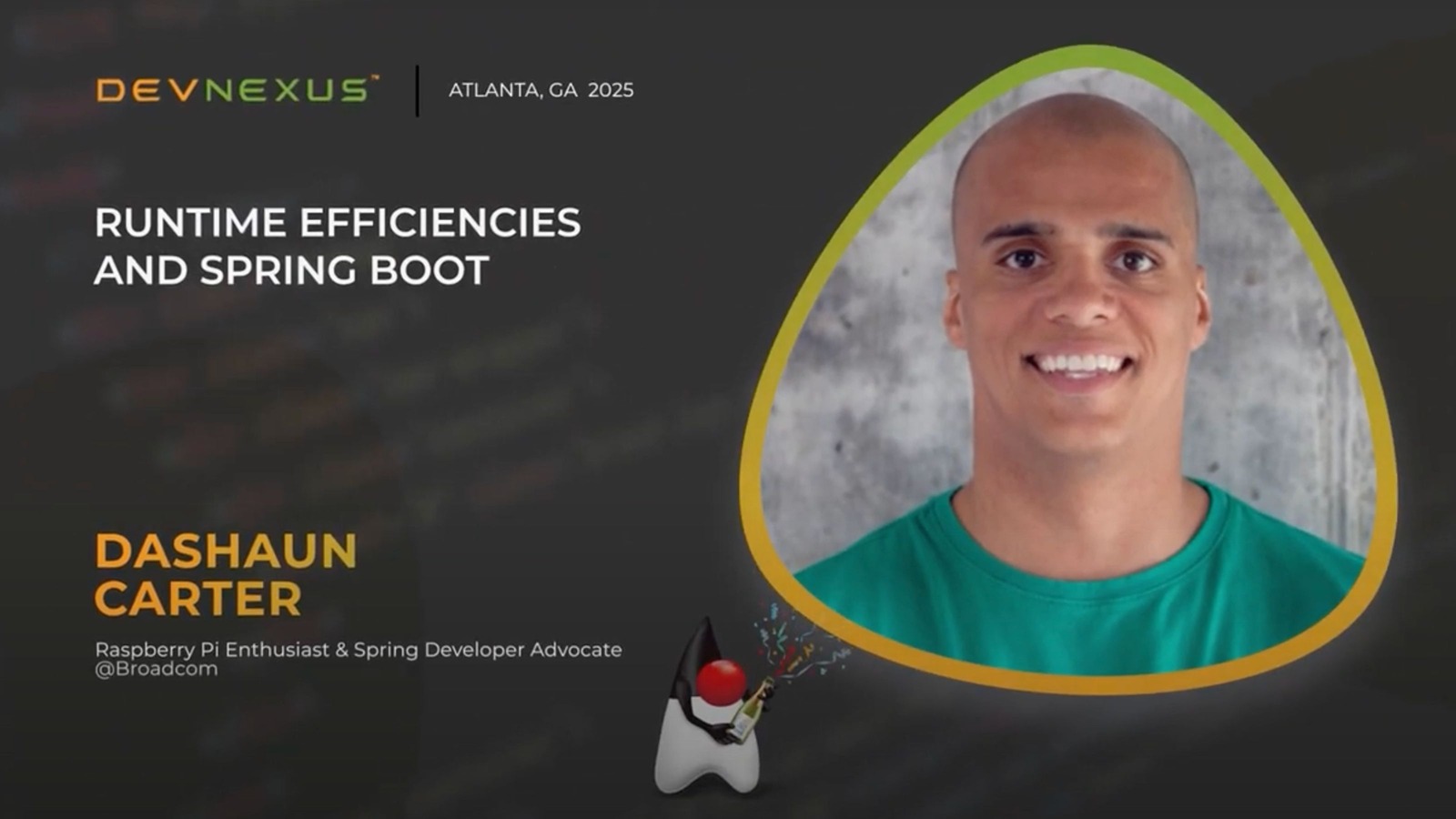Runtime Efficiencies and Spring Boot with DaShaun Carter

In his Devnexus session, DaShaun Carter, Spring Developer Advocate, tackled one of the most urgent challenges in modern Java development: cloud runtime efficiency. For years, Java—and by extension, Spring Boot—has faced criticism for slow startup times and heavy memory consumption. In today’s pay-per-millisecond cloud economy, those inefficiencies translate directly into inflated costs and scalability limits. Carter captured this impact with a striking metric: even shaving latency from two milliseconds to one could double a company’s revenue. The question for developers is no longer just can Spring run in the cloud, but how efficiently can it run there?
Carter’s approach centers on enabling developers to do more with less, optimizing performance without sacrificing productivity. The journey begins with simple but high-impact steps. Upgrading from older Java versions like 8 to modern LTS releases such as 17 or 21 can cut memory usage by up to 50%, thanks to years of JVM-level improvements. From there, developers can unlock deeper performance gains through Ahead-of-Time (AOT) processing and Class Data Sharing (CDS). AOT pre-generates configuration and reflection data at build time, removing runtime lag, while CDS speeds up subsequent starts by caching class data across runs. For the ultimate optimization, GraalVM Native Images take this further—compiling Java apps into standalone executables that start almost instantly and consume a fraction of the memory. In Carter’s demonstration, the shift from a traditional JVM image (166 MB) to a native image (11 MB) underscored just how dramatic these savings can be.
The key takeaway is both practical and empowering: the Java of today is fast, efficient, and cloud-ready. Developers are encouraged to measure and prove these improvements using Spring Boot’s built-in Actuator metrics—benchmarking startup times and memory usage before and after each optimization. By automating builds with Cloud Native Buildpacks, teams can eliminate manual Dockerfile management and take advantage of multi-architecture support, AOT processing, and GraalVM optimizations out-of-the-box. Carter closed his session with a strong message: by combining JVM advancements, AOT, and native execution, Spring Boot developers can achieve up to 70% reductions in infrastructure costs, transforming Java from a perceived heavyweight into a model of efficiency for the cloud-native era.
🎥 Watch the Session
🚀 Join Us Next Year at Devnexus
Want more sessions like this? Join us at Devnexus 2026 — the ultimate gathering for Java and cloud-native developers to learn, connect, and shape the future of software development.



